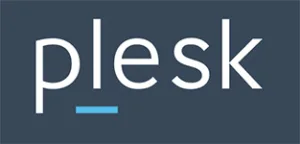From an MVC app, I’m sourcing an iCal subscription with authentication following the answer to this SO question:
Serving an iCalendar file in ASPNET MVC with authentication
The iCal stream is being created dynamically from events in the DB using the DDay.iCal library.
This solution works fine on the local development server: both OSX Calendar and Outlook can subscribe to and receive updates from the app.
However, on the shared server at my web host, the authentication fails for both Calendar and Outlook. That is, they both keep asking me for user & password after the (correct) ones fail.
EDIT: If I point a browser at the calendar URL it also fails authentication.
EDIT: Getting weirder—Firefox authenticates and gets the iCal file. Safari, Chrome and IE fail authentication.
If I point curl at the calendar URL with the same credentials I’m successful (i.e. I get the desired iCal file). And, of course, the same credentials can be used to login to the MVC app.
EDIT — I think I know what’s going on, but I don’t know how to fix it. In my OnAuthorization() I add only WWW-Authentication Basic but with Fiddler I can see that three types of authentication are offered:
HTTP/1.1 401 Unauthorized
WWW-Authenticate: Basic realm="Secure Calendar"
WWW-Authenticate: Negotiate
WWW-Authenticate: NTLM
... etc ...
At this point only Firefox responds with Basic Authorization, which succeeds.
GET <<URL>> HTTP/1.1
...
Authorization: Basic <<encoded credentials>>
IE responds with Negotiate, which fails
GET <<URL>> HTTP/1.1
...
Authorization Negotiate <<encoded stuff>>
Who is adding the other two and how can I make it stop? Here’s more detail from the server response:
HTTP/1.1 401 Unauthorized
Cache-Control: private
Transfer-Encoding: chunked
Content-Type: text/html
Server: Microsoft-IIS/7.5
X-AspNetMvc-Version: 3.0
WWW-Authenticate: Basic realm="Secure Calendar"
X-AspNet-Version: 4.0.30319
WWW-Authenticate: Negotiate
WWW-Authenticate: NTLM
X-Powered-By: ASP.NET
X-Powered-By-Plesk: PleskWin
Date: Tue, 23 Oct 2012 13:27:48 GMT
Thanks,
Eric

 Question posted in
Question posted in 

5
Answers
Ha ha, the answer lay in IIS configuration.
I asked the admins at my host to turn off the other authentications, which broke everything but the iCal feed.
Now they've turned a couple back on again and the MVC site works as well as the calendar feed with authentication... whew! Very, very big smile.
Here's the IIS configuration we ended up with:
I'm not sure why this works—or what else might break—but today I'm happy.
are used by Windows authentication. Since you finally enabled anonymous authentication, all
WWW-Authenticateheaders will not appear.Easy way :
If you want this “X-Powered-By-Plesk” Header to be removed from EVERY NEWLY created domains, you can create a default web.config file within the “httpdocs” folder of the “Default Host Template”.
This default website template is usually located under : “C:inetpubvhosts.skel�httpdocs“.
That web.config file will be used by default when you create a new website.
TIP 1 : You can use this method to remove any unwanted Custom header (In order to not tell too much to bad guys about your server) :
TIP 2 : If you want to remove any Dynamic header (like the famous “Server” header), you will need to operate with outboundRules :
TIP 3 : Additionally, you can use this default web.config file to set all configuration parameters you want to use for every new website (in example : to define a list of default documents for your websites, as explained on this Plesk Help article : https://support.plesk.com/hc/en-us/articles/213364049-How-to-configure-global-default-document-settings-in-Parallels-Plesk )
As a belated answer to this, you could also handle this by creating a custom message handler.
The message handler would be inheriting from
DelegatingHandlerand has to be added to theHttpConfigurationitsMessageHandlersA way this could look would be the following:
And then register it in the HttpConfiguration somewhat like the following
Which you would probably call from your global configuration. A message handler can also be attached to a route directly, so if you don’t want it to be available everywhere, just have a looked at the linked article on MSDN for more explanation
I had the same problem.
The response included 3 WWW-Authenticate headers and only Firefox worked correctly. Chrome, Bing and IE prompted for username and password but after that they did not send the Authenticate Header to the server.
I just changed IIS Authentication settings and it was solved: